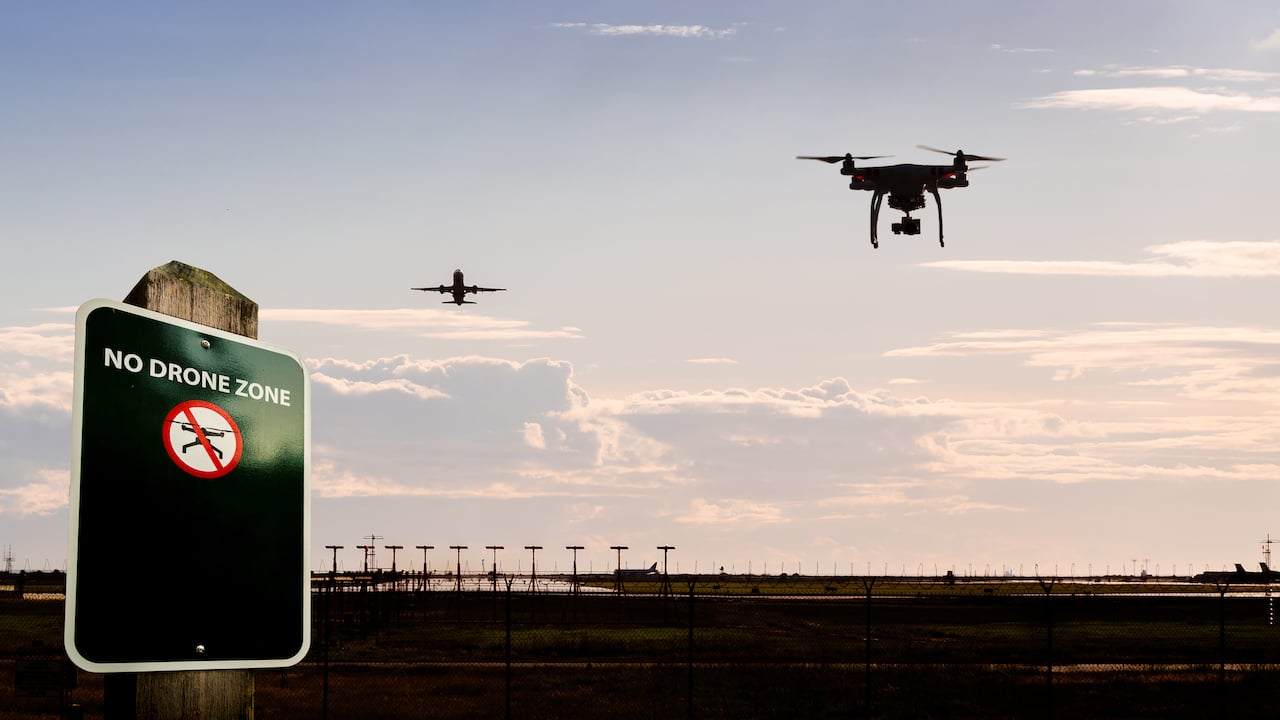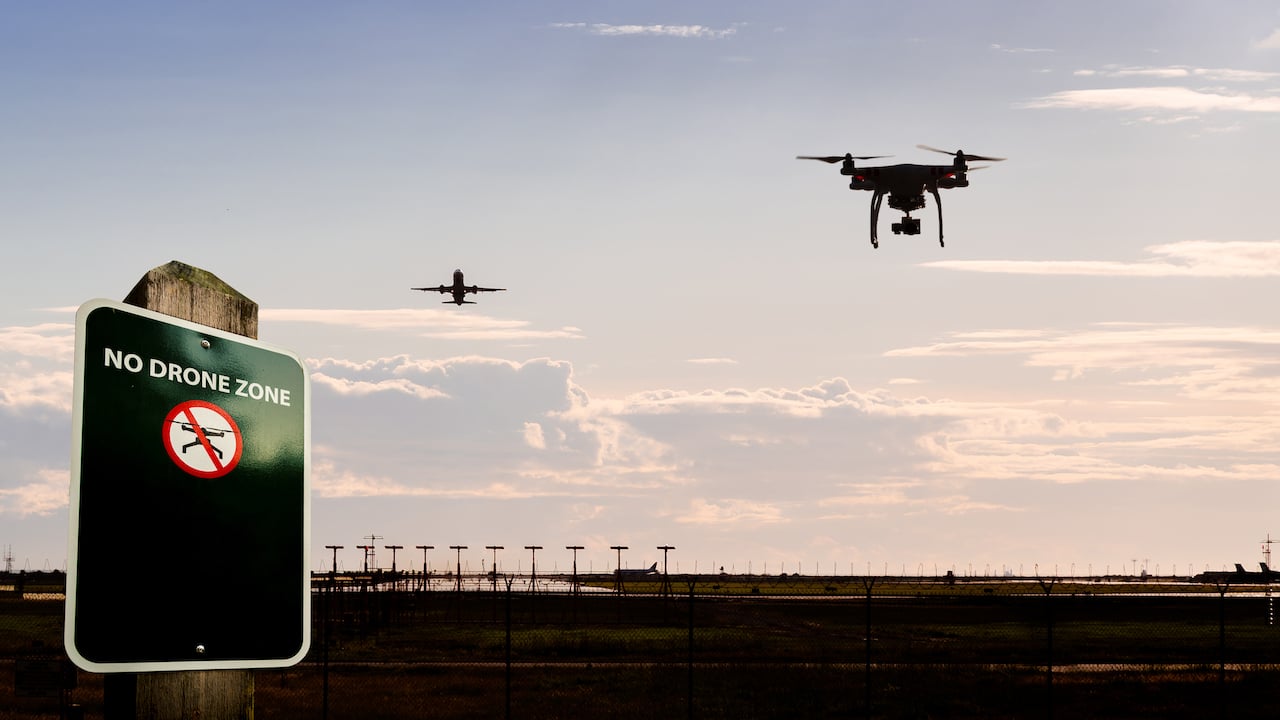
 Drone not alone; the idea is to prevent this sort of thing happening
Drone not alone; the idea is to prevent this sort of thing happening
Leading drone manufacturer DJI will add automatic aeroplane and helicopter detection to its consumer drones next year.
Following a certain amount of high-level concern about the role drones are playing in aircraft safety, DJI has announced that from 1 January 2020, all of its drones over 250 grams (ie all its current range) will ship with ADS-B receivers on board to detect nearby air traffic.
ADS-B, or Automatic Dependent Surveillance—Broadcast to give it its full name, is the emergent air industry standard for broadcasting the location of aeroplanes and helicopters. It’s going to be mandatory in the US by the same 1 January date and, although the Federal Aviation Authority isn’t insisting it be applied to drones yet, DJI seems to be making a pre-emptive move against a future where it probably might be.
ADS-B rollout is patchy around the rest of the world, so what does it mean for US drone pilots in particular? Essentially it means that the technology, dubbed AirSense by DJI, will detect airplanes and helicopters way beyond visual or audio range of the pilot and display the craft’s location on the screen of the pilot’s remote controller. As far as we’re aware at this stage, that’s it. It doesn’t automatically move the drone away from the aircraft or take any other automatic avoidance action, though it does warn the drone pilot if the two vehicles appear to be on a collision course.
The system was developed for the company’s high-end drones such as the Mavic 2 Enterprise, and there are no indications of any receiver chip installation being rollout out to existing models. It’s also worth pointing out that they are simply receiver chips too; there is no broadcast signal involved and so the drones won’t be transmitting their location to ATC or any adjacent vehicles.
Given the fuss and undeniable disruption that drone incidents have caused, there will be many that question whether this goes far enough. DJI must be hoping that voluntarily adding its fleet to the ADS-B roster and implementing an alert system will be enough to prevent further incidents. It certainly shows willing. But the authorities will no doubt already be looking ahead to a potential future where the AirSense technology is married up to the geofencing abilities already existing in the DJI drone range and asking whether automatic exclusion zones can become enforced.
Drone pic: shutterstock
Tags: Technology


Comments